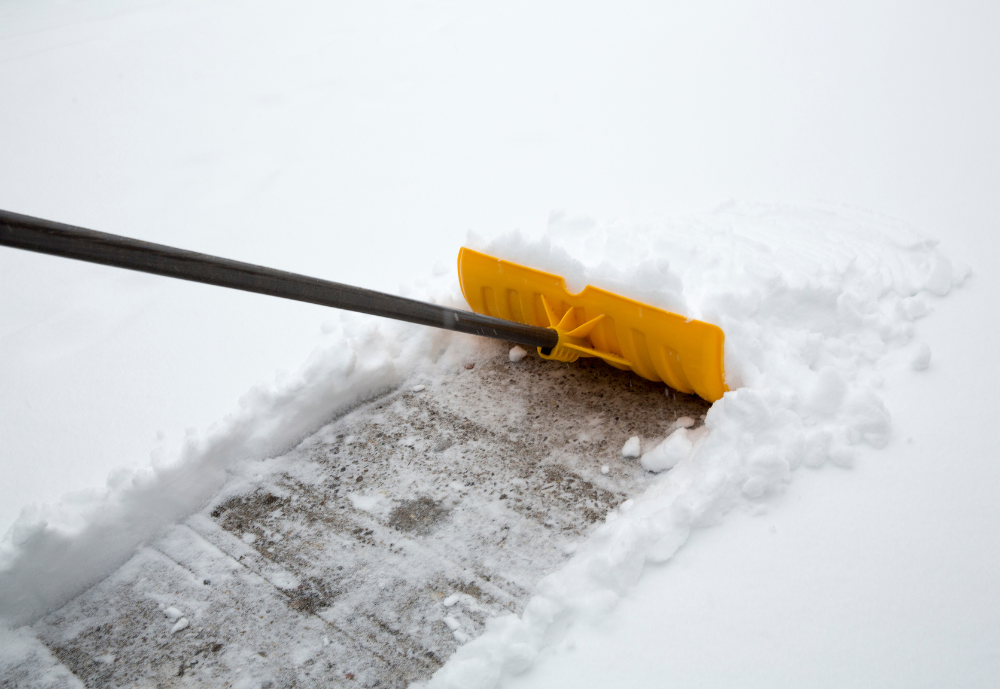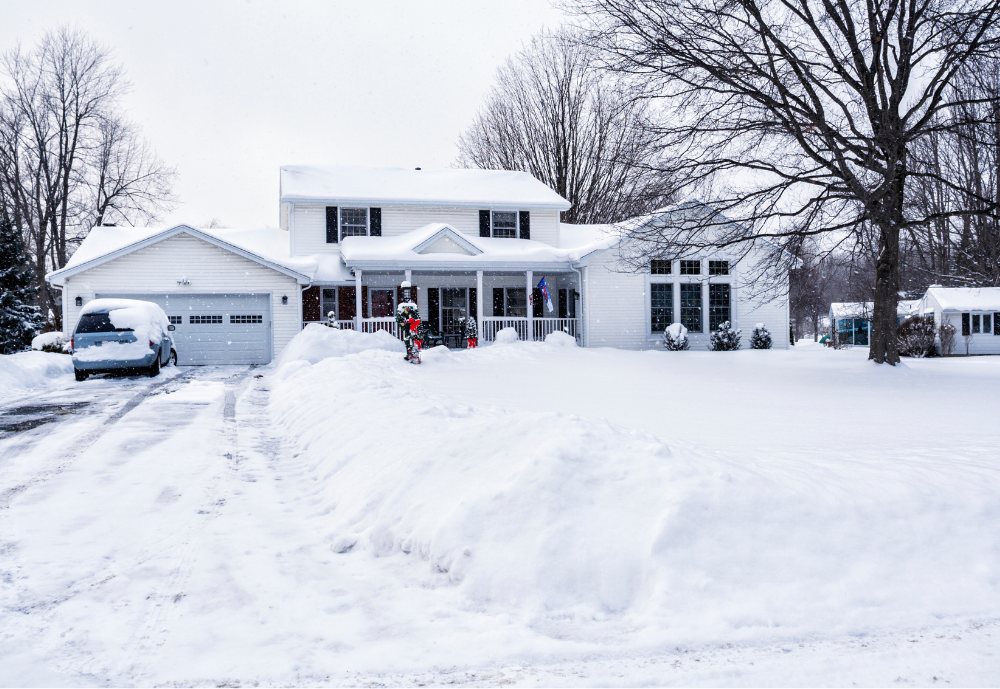Minnesota experiences a wide range of weather throughout the year. From the heat and humidity of summer to the freezing temperatures, snow, and ice of winter, weather extremes can wreak havoc on your home’s exterior.
If you’ve lived in Minnesota for even one winter season, you know that winter weather can be especially destructive to your home. Here’s what you need to know about how Minnesota weather impacts your home, home maintenance tasks you can do to minimize damage, and when it’s best to hire a professional.
How Minnesota’s Weather Extremes Affect Your Home
Winter weather not only makes for difficult driving conditions and a whole lot of shoveling, but heavy snow, ice, wind, and temperature fluctuations can also cause both immediate and long-term damage to your home’s exterior.
High winds can blow off gutters, roof shingles, or siding, leading to indoor water damage, while extended periods of extreme cold can weaken your home’s foundation. Condensation can build up inside inefficient windows when your heat is on in the winter, leading to mildew and mold growth, as well as other moisture damage.
Heavy snow and fluctuating temperatures can also cause damage to your roofing, gutters, and siding. For example, as temperatures rise, the snow and ice that have accumulated on your roof start to thaw, and the resulting water can seep into cracks in your roofing material. Then when temperatures drop again, that water refreezes and expands. Continuous freezing and melting can cause significant long-term damage if left unchecked.
Common Minnesota Home Maintenance Issues
There are a number of issues that can arise when extreme weather hits. Here are the most common home maintenance issues caused by Minnesota weather extremes.
Ice Dams and Other Roof Damage
Ice dams can form when parts of your roof warm up above freezing, causing the snow to melt. The melted snow then runs down to parts of the roof that are cooler, where it refreezes. This creates a dam of ice that prevents water from running off the roof and into gutters where it would normally be directed away from your home. As the water pools behind the dam, it can seep beneath shingles and ultimately leak into your home.
To prevent ice dams, make sure your attic is properly insulated and ventilated, and keep gutters clear of debris.
In addition to ice dams, winter weather can also bring high winds that damage or loosen shingles or blow tree branches onto your roof, causing further damage to your roof.
Mold and Mildew Growth
Too much humidity can cause problems as well. Inefficient windows, a leaking roof, clogged gutters, or poor insulation can cause moisture to accumulate in your home. If left untreated, this condensation can lead to mildew or mold growth and even water damage to your home and belongings.
Maintaining your windows, roof, gutters, and insulation will not only keep your home cozier this winter, but will also help prevent moisture damage.
Cracking and Shifting Foundations
As the soil surrounding your foundation gets wet, then freezes and thaws, it expands and contracts, causing your foundation to shift. This is known as frost heave.
Frost heave happens when freezing temperatures cause wet soil to expand. Then, as snow melts, it saturates the soil, resulting in further expansion once temperatures drop below freezing again. As frozen soil expands upward, it shifts the foundation. These shifts can then lead to leaks and seepage.
To protect your foundation from frost heave:
- Waterproof your foundation
- Grade your yard so water flows away from your home
- Keep gutters and downspouts clean and in good repair
In addition, if you notice cracks in your foundation, repair them as soon as they appear so they don’t cause bigger issues down the road.
Damaged Siding or Fading and Peeling Paint
Strong winds, fluctuating temperatures, and moisture can also damage your home’s siding and exterior paint.
High winds can pick up debris like rocks and sticks (or even outdoor furniture or trash cans, if the wind is strong enough!) and fling it at your home’s siding, causing it to crack or dent. Very strong gusts can also result in loose or missing siding.
Once your siding is cracked, loosened, or stripped of protective paint, moisture can find its way into and behind your siding, worsening the damage. Watch for cracks or dents in siding, loose boards, areas of faded or peeling paint, debris buildup, or mildew or mold growth on your home’s siding.
If you notice any of these issues, have them repaired or replaced as soon as possible to prevent further damage to your home.
Essential Home Maintenance Practices

As we head into winter, there are a few maintenance items you can take care of to ensure your home’s exterior is prepared to protect you from the elements. Here’s a brief checklist you can follow:
- Keep up on regular inspections and assessments, including routine roof inspections
- Make sure you know where any warranty paperwork is so you can access it if you need it
- Schedule seasonal preventive maintenance tasks with your friendly neighborhood contractor 😉 and have minor repairs made before they become major ones
- Trim tree branches around your home
- Clean out gutters and downspouts and keep them in good repair
- Store away or secure lawn and patio furniture
- Check windows for drafts or areas of moisture damage, replacing them as needed
- Secure loose siding and repair or replace any damaged boards
- Look for peeling exterior paint and repaint as needed
- Make sure the ground surrounding your home is sloped away from the foundation so water can drain properly
- Clear snow away from your foundation before the spring melt begins
In addition, don’t forget about your deck! Check out our recent blog to learn how to care for your deck this winter.
Minnesota Exterior Home Maintenance: When To Hire a Professional
While you can take care of many of these tasks yourself, there are some things only a professional should do.
Regular professional inspections (such as a roof inspection done once or twice a year) will help make sure your home’s exterior is in good condition and prevent the damage winter weather can cause. In addition, if you need roof or gutter repairs or replacement, tree trimming, siding replacement, or any other maintenance that can be dangerous or requires specialty tools, hiring a professional is the safest option.
If you need help making sure your roof, siding, gutters, windows, or deck are prepared to withstand the winter, Hoyt Exteriors is here to help. Contact us today to discuss your needs and get on our schedule!

